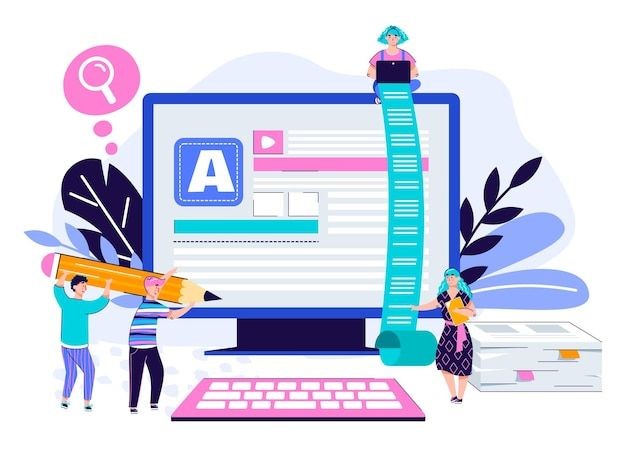Tutorials
How To Paraphrase Text Using AI Tools In 2024
By 2024, AI paraphrasing tools will be widely used to rewrite text efficiently with higher quality. These advanced tools use cutting-edge natural language processing and machine learning to analyze text and generate new sentences conveying the same overall meaning.
AI paraphrasing provides a faster, more convenient way to rephrase than manual paraphrasing. It has the potential to become an indispensable writing aid, despite needing human review.

This guide explores how AI paraphrasing works, best practices for optimal results, and expert insights into the rapid evolution of this technology. As AI paraphrasing capabilities progress, these tools have immense potential to aid writing and communication across diverse contexts.
Rapid Evolution of AI tools for paraphrasing
The development of AI paraphrasing tools has seen remarkable progress in recent years. These tools utilize the capabilities of artificial intelligence and natural language. These tools offer efficient and effective solutions for text rewriting

Initially, the formal paraphrasing tool focused on simple words and sentence restructuring. Now, this tool produces more precise and appropriate paraphrases.
AI-Powered Paraphrasing Tools
Paraphrasing tools powered by AI have become essential in the online world. It changes how we manage text and content. These advanced tools utilize artificial intelligence to provide efficiency in rewording text.
AI-powered paraphrasing tools are highly valuable for businesses and website owners. These tools help in expanding content and optimizing it for SEO purposes. They allow the creation of unique and fresh content. This led to improved search engine rankings.
Types of AI Tools for Text Paraphrasing
There are several AI tools for text paraphrasing.
1. Paraphrasing tool
A paraphrasing tool is a software or online application that helps rephrase or reword text. It preserves the original meaning but using different words or sentence structures. It takes an input sentence, paragraph, or document and generates an alternative version.
2. OnlineParaphraser
OnlineParaphraser is an online tool or website that specializes in paraphrasing text. These platforms typically utilize automated algorithms. These algorithms offer alternative versions of the input text, providing rephrased content.

3. SmartParaphraser
Smartparaphraser is a paraphrasing tool or software. It helps users to rephrase or reword text. It creates unique content while retaining the original meaning. Paraphrasing improves clarity by simplifying sentences.
4. Paraphraz.it
It is also a paraphrasing tool. It creates unique content while preserving the original meaning. It’s an essential tool used in various types of writing like articles and research papers.
Key Features of Advanced Paraphrasing Models
There are several key features and capabilities of advanced paraphrasing models.
● Contextual Understanding
These models have a deep understanding of the context in which text appears. It generates contextually appropriate paraphrases.
● Speed and Efficiency
Advanced paraphrasing models can quickly generate paraphrased text. It saves users time and effort in content creation.

● Natural Language Generation
They can produce human-like, natural-sounding text. The readers find it as if it were written by a person. It makes the paraphrased content more engaging and authentic.
● Grammar and Syntax
They can maintain proper grammar and syntax. It makes the sentence structure more readable.
● Plagiarism Prevention
These tools help users to create unique content. It reduces the risk of plagiarism by offering fresh rephrasings of existing text.
Using AI Tools for Text Paraphrasing
AI tools can be a helpful and efficient resource for text paraphrasing. They allow users to generate unique content and prevent plagiarism. It modifies text to fit various contexts.
Step-by-Step Guide for Paraphrasing with AI
Followings are the step by step guide for paraphrasing with AI.
1. Choose a Paraphrasing Tool
Select a good AI-powered paraphrasing tool or platform. There are various online options available.
2. Input the Text
Copy and paste the text you want to paraphrase into the input area of the tool. Some tools might also allow you to upload a document or enter a URL.
3. Generate Paraphrased Text
Click the “paraphrase” or “rewrite” button to initiate the AI tool’s process. It will generate a paraphrased context of the input text.
4. Save or Use the Paraphrased Text
Once you’re satisfied with the paraphrased content. You can save it to your computer.
5. Check if there’s Plagiarism in your content
It is necessary to go through a plagiarism checker to ensure it’s unique context
6. Make sure you Proofread
Always proofread the final text to correct any grammar. These tools may introduce issues during the paraphrasing process.
Latest Techniques in AI-Powered Paraphrasing
Paraphrasing with the help of AI has seen advancements in this digital world. It provides more precise and relevant rephrased text. Here are some advanced techniques in AI-powered paraphrasing
● Fine-Tuning on Specific Domains
Advanced paraphrasing models can be fine-tuned on domain-specific datasets. This enables them to generate paraphrases with better terminology.
● Style and Tone Control
These tools allow users to control the style and tone of the output. It ensures that the paraphrased text matches the desired voice. The voice can be formal, casual, academic or creative.
● Content Expansion
These models can intelligently expand content by adding relevant information. These tools add more explanations making the paraphrased text more informative.
● Multi-Lingual Support
Some paraphrasing tools support multiple languages. This allows users to paraphrase text in different languages. This is especially useful for multilingual content creators.
● Customization and Integration
These tools provide users with the flexibility to customize their experience. They seamlessly integrate with a range of applications and platforms. These tools make content creation and management more accessible.
Future Trends in AI-Powered Paraphrasing
The field of AI-powered paraphrasing is expected to undergo advancements in the coming years. These developments will include a deeper understanding of context. This includes incorporation of multimodal content (text, images, and audio) in cross-lingual paraphrasing.
Emerging Technologies and Innovations
Advancements in natural language processing and machine learning algorithms will drive the evolution of AI-powered paraphrasing. These innovations may include better techniques for contextual analysis. It generates content expansion algorithms and improved cross-lingual models.

Potential Impact on Content Creation
AI-powered paraphrasing has the potential to greatly impact content creation. It offers efficient processes that allow writers to access a variety of tools. These tools generate unique and engaging content. This saves valuable time and effort in the content creation process.
Ethical and Regulatory Implications
Ethical concerns surround the development and use of AI-powered paraphrasing tools. These tools have the potential to enable unethical plagiarism. It prioritizes transparency and fairness in the algorithms employed by these systems. These tools developers should establish guidelines and standards for AI-powered paraphrasing systems.
Conclusion
AI-powered paraphrasing tools have seen remarkable innovation, providing efficient text rewriting while preserving meaning. As this technology continues advancing, paraphrasing models will gain an even deeper understanding of language and writing. However, it is crucial that ethical considerations guide the development of these systems. With transparency and fairness as priorities, AI paraphrasing tools can become hugely valuable resources. While still needing human oversight, they have potential to transform how we generate and manage content.
